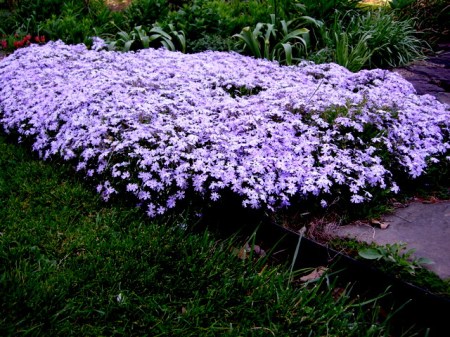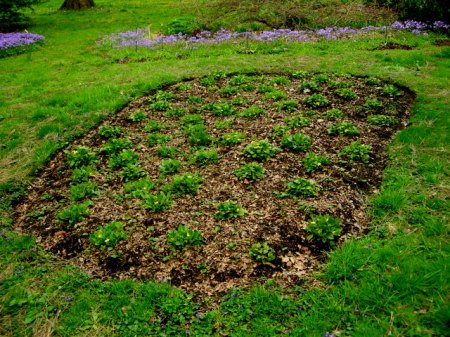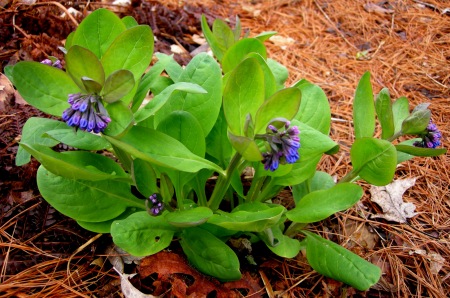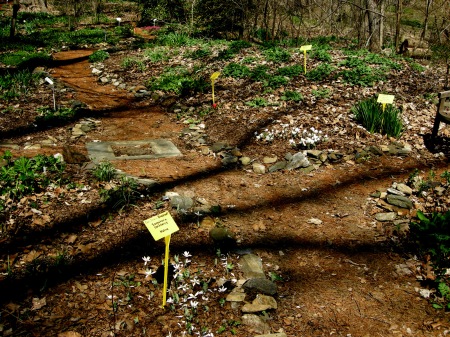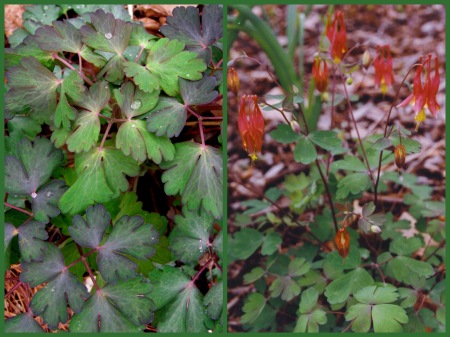It continues to be cold, wet, and overcast in southeastern Pennsylvania, so I thought photos of a beautiful garden in its May glory would be welcome. Michael and I visited the garden, which is located in Haverford, Pennsylvania, US, on May 23, 2017, for an event sponsored by The Pennsylvania Horticultural Society. In a previous post, The Elements of a Beautiful Garden, I wrote about eight important concepts that work together to create a beautiful garden. This garden, which was lovingly designed and maintained by the homeowners, contains all those elements.
Nursery News: Local customers can order winter interest plants like hellebores, cyclamen, winter aconite, and more in the 2018 Winter Interest Plant Catalogue, to access it click here.
Carolyn’s Shade Gardens is a retail nursery located in Bryn Mawr, PA, specializing in showy, colorful, and unusual plants for shade. The only plants that we ship are snowdrops and miniature hostas. For catalogues and announcements of events, please send your full name, location, and phone number (for back up use only) to carolyn@carolynsshadegardens.com. Click here to get to the home page of our website for catalogues and information about our nursery and to subscribe to our blog.
 The front garden has lovely lines.
The front garden has lovely lines.
.
I highly recommend that you read my previous post by clicking here. Each element is explained in more detail with accompanying photos. However, here is a list of the elements to think about as you view this glorious May garden:
- A Good Design
- Lots of Plants
- Lots of the Same Plants
- Attention to Detail
- Trial and Error
- Use of Hardscape
- Garden Ornaments and Containers
- Maintenance, Maintenance, Maintenance
.
 Chinese ginger and ‘Golden Tiara’ hosta, contrasting colors and complimentary shapes. Every plant in the garden was healthy and robust.
Chinese ginger and ‘Golden Tiara’ hosta, contrasting colors and complimentary shapes. Every plant in the garden was healthy and robust.
. The walls of the house were an important part of the garden.
The walls of the house were an important part of the garden.
.
 Color was used sparingly and really stood out from the luxurious green backgrounds.
Color was used sparingly and really stood out from the luxurious green backgrounds.
.
 The garden was divided into charming garden rooms. The rose-covered archway led to steps down to the pool, just visible in the upper right of the photo.
The garden was divided into charming garden rooms. The rose-covered archway led to steps down to the pool, just visible in the upper right of the photo.
.
 Healthy, well-maintained boxwoods made a great edge and provided continuity from one garden “room” to the next.
Healthy, well-maintained boxwoods made a great edge and provided continuity from one garden “room” to the next.
.
 Containers were used very artistically, not too many and just the right scale.
Containers were used very artistically, not too many and just the right scale.
.
 The birdhouse was a focal point from many areas of the garden.
The birdhouse was a focal point from many areas of the garden.
.
.
 This path led from the pool area, through the gate, and around to the main lawn area—simple and elegant.
This path led from the pool area, through the gate, and around to the main lawn area—simple and elegant.
 The back terrace has a sweeping view down to the woods below.
The back terrace has a sweeping view down to the woods below.
.
 The view from the back terrace.
The view from the back terrace.
. The entire lawn area was edged with native ‘Annabelle’ hydrangeas backed by mature shrub specimens like this lilac.
The entire lawn area was edged with native ‘Annabelle’ hydrangeas backed by mature shrub specimens like this lilac.
.
This garden inspired me to focus on the elements of my own garden, and I hope you too will find it inspirational!
Carolyn
.
Nursery Happenings: You can sign up to receive catalogues and emails about nursery events by sending your full name and phone number to carolyn@carolynsshadegardens.com. Subscribing to my blog does not sign you up to receive this information. Please indicate if you will be shopping at the nursery or are mail order only.
Carolyn’s Shade Gardens is a local retail nursery in Bryn Mawr, Pennsylvania, U.S., zone 6b/7a. The only plants that we mail order are snowdrops and miniature hostas and only within the US.
Facebook: Carolyn’s Shade Gardens has a Facebook Page where I post single photos, garden tips, and other information that doesn’t fit into a blog post. You can look at my Facebook page here or click the Like button on my right sidebar here.
Notes: Every word that appears in orange on my blog is a link that you can click for more information. If you want to return to my blog’s homepage to access the sidebar information (catalogues, previous articles, etc.) or to subscribe to my blog, just click here.























